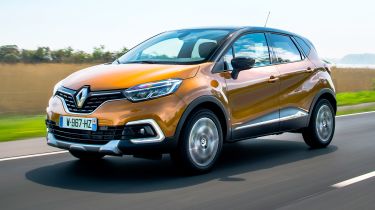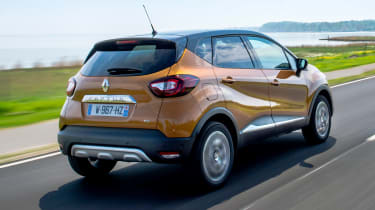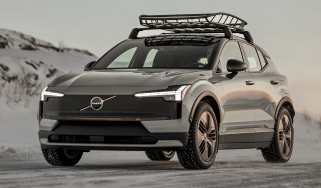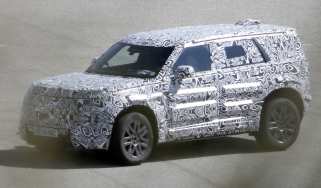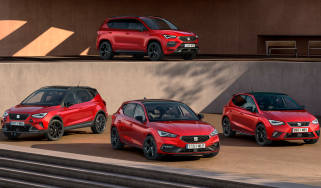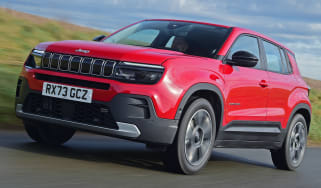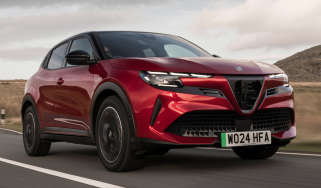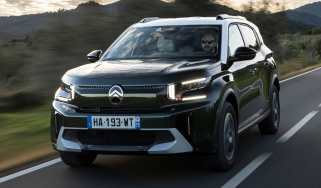Used Renault Captur review: 2013 to 2019 (Mk1)
"The Renault Captur is a comfortable and easy-to-drive small SUV that should be cheap to run"
Pros
- Comfy and easy to drive
- Practical for a car of its size
- Low running costs
Cons
- Dated interior and tech
- Dull to drive
- Build quality could be better
The first-generation Renault Captur is a smart-looking, practical and easy-to-drive small SUV, so it’s bound to have lots of appeal to many buyers. This kind of car is really popular right now and while the Captur isn’t an outstanding example of the crossover breed, it’s good enough in all the right ways to be worth recommending. It’s comfortable, has enough room inside for a small family, has some very fuel-efficient engines and enough modern tech as well. It was never an expensive car when new, so prices are affordable, too.
The Renault Captur is closely related to the Clio, a supermini that’s been around for decades. The Captur capitalises on the current trend for higher-riding SUV models by using Clio parts to create something that has the styling that buyers love but with the low running costs of a small car. It’s a really popular combination, so there are now plenty of first-generation Renault Capturs on sale second-hand.
 Top 10 best used small SUVs to buy
Top 10 best used small SUVs to buy
The Captur makes a lot of sense for anyone torn between a conventional hatchback and an SUV, offering decent practicality and interior space in a compact package. Its considerable popularity comes as little surprise and it's a rival to the Fiat 500X, Peugeot 2008 and Vauxhall Mokka, among many others.
More reviews
In-depth reviews
Unlike some of its rivals, the Captur can't be chosen with four-wheel drive, but this is unlikely to put many prospective buyers off. It has an appealing design, with tough body cladding, muscular curves and bold wheels, while its raised ride height adds road presence as well as providing a good view from its higher driving position.
What’s the history of the Renault Captur?
The Renault Captur first arrived in the UK in July 2013, and could be chosen with a 0.9-litre (TCe 90) or 1.2-litre (TCe 120) petrol engine, with a 1.5-litre diesel (dCi 90) also available. There were four trim levels; Expression, Expression+, Dynamique Media Nav and Dynamique S Media Nav. A flagship Signature model was added later, too.
The Renault Captur diesel was manual-only at first, but it wasn’t long before an EDC (Efficient Dual Clutch) version provided buyers with an automatic option. In March 2015, the 1.5-litre dCi was made available in more powerful 110bhp form. Later that year, the Iconic special edition was released, featuring a part-leather interior and unique two-tone paint scheme.
In 2017, there was an update with new LED headlights and a different grille, plus more standard kit. A new 1.3-litre engine was added to the range with either 128bhp or 148bhp at this time. In 2018 trim names were changed to Play, Iconic, GT-Line and S Edition. In 2019, the Captur Mk1 was replaced by the all-new Mk2 model.
Which is the best Renault Captur to choose?
The best engine in the Renault Captur range is the 1.3-litre petrol that was made available in later models. It’s a bit more expensive, but the 128bhp version is plenty for a small car like the Captur and it should still be cheap to run.
However an older model will be better value for money overall, and most buyers were choosing diesel engines in the first half of the last decade. This means you’ll have a greater choice of models if you also go for a diesel Captur, although in general the petrol models will have travelled fewer miles. It can be deceptive, though, because diesels excel on motorways, which are less taxing on the motor, so it may be better to buy a higher-mileage diesel over a petrol version that’s been used for loads of short trips.
We’d choose a mid-spec model, as they are the best value. For example, Dynamique MediaNav has a seven-inch touchscreen navigation system with Bluetooth, as well as climate control, 17-inch alloy wheels and cruise control.
What are the alternatives?
The Nissan Juke is a key rival for the Captur, because it shares some of the same engines. The Juke is rather compromised in interior space, with a far smaller boot than the Captur. It’s well priced, though, and most examples are well equipped.
Another is the Peugeot 2008, which is a good-looking, economical car designed along similar lines and with a practical interior. Another choice is the Vauxhall Mokka, which is often temptingly priced second hand and spacious inside. It’s rather noisy, though, and not much fun to drive.
One of our favourite models in this class is the Citroen C4 Cactus, which is a spacious, comfortable and stylish small SUV. If you’re looking at a slightly newer Captur, there’s also the Citroen C3 Aircross that was launched in 2017.

